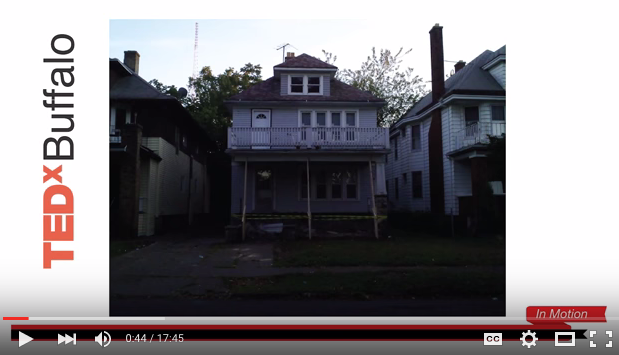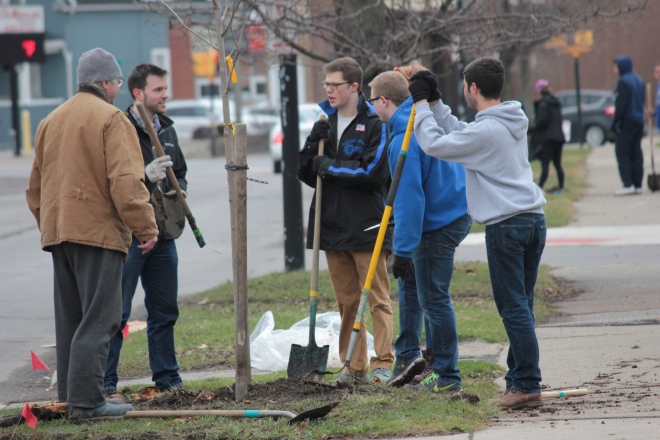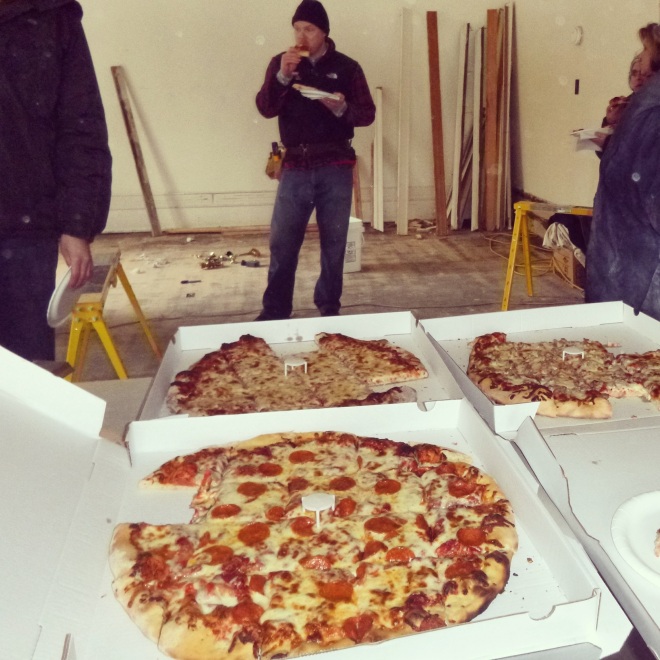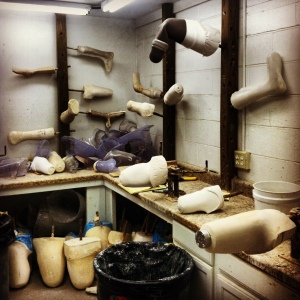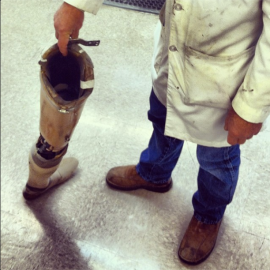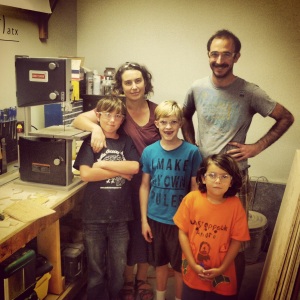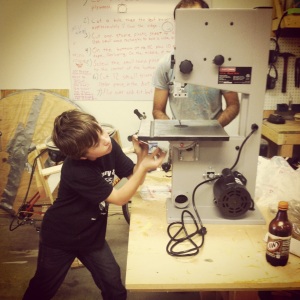
Boy building a model airplane at a Farm Security Administration (FSA) camp. Initially created as the Resettlement Administration (RA) in 1935 as part of the New Deal in the United States, the FSA was an effort during the Depression to combat American rural poverty. The kids stayed busy as well.
During the Great Depression, there was death, famine, and extreme poverty. There was also a hell of a lot of quilting going on. The un- or under-employment in the 1930s brought with it a nationwide hobbies movement, promoted by everyone from Hollywood child stars to POTUS. Hobbies are generally defined as “specific activities pursued voluntarily in non-work hours for pleasure,” though many hobbies actually did have some tie to the economy, even if the pay wasn’t immediate or monetary (think: build your own or grow you own).
Having spare time was a new concept for many, and the U.S. government actively promoted and encouraged things like stamp collecting (FDR was a huge fan so it boomed), sewing, metalworking, model building, leatherworking and other useful or educational busy work as socially acceptable ways to spend one’s time. Guardians of public morality, such as government officials, ministers, and educators fretted about “morally dangerous activities” when the public was idle. So, you know, things like building model trains emerged as “approved” areas of leisure over activities like, say, gambling or counterfeiting. Hobbies also preserved a pro-work attitude and ethic, and developed job skills at a time when work was scant.

1933 map quilt titled “Birds Eye View of the Chicago World’s Fair.” The Sears National Quilt Contest, created in connection with the 1933 Chicago World’s Fair, offered $7500 in prizes—including a grand prize of $1000. More than 24,000 quilts were entered making it the largest quilt contest in history. People who had never quilted before decided to try. Husbands and boyfriends helped make the quilts. Adept quilters did their very best work. Local Sears stores not only sold fabric, supplies, and patterns, they displayed the finished quilts. All of this is simply to say that hobbies are damned awesome.
Hobbies also served to relieve the guilt of not having enough paid work—idle hands are the devil’s work, after all. This still rings true, of course. Feeling anxious about a slowdown in work and not sure how to relieve that stress? Do what I did in January and turn your apartment into an elf workshop––with newspapers and wire and string and glue and pliers everywhere––culminating in wool-wrapped vases, elaborately framed stamps, and paper mache miniature models of my friends doing things they enjoy. Guilt and nerves are ingredients for great gifts. This kind of creative, hands-on stuff blurs the lines of work and play. It’s certainly no wonder that so many folks with unwanted leisure time turned to hobbies in the 1930s—while they likely didn’t learn to paper mache a piñata in 7th grade Spanish class like this rockstar, they certainly had a great facility with tools from working on farms and in factories.
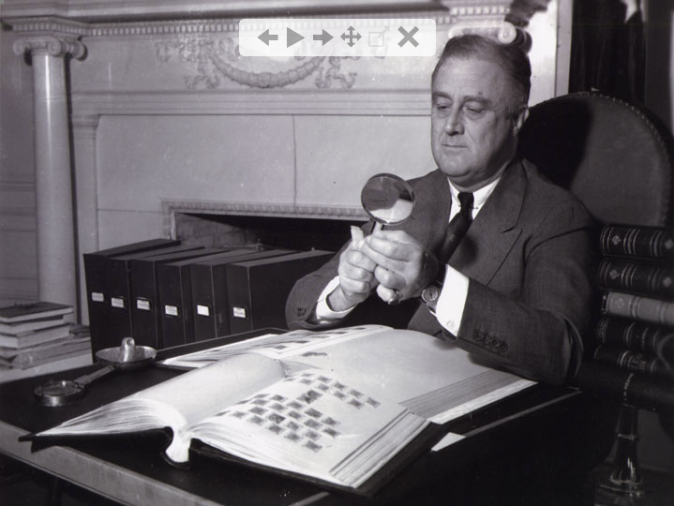
FDR, the consummate philatelist. (From the Franklin D. Roosevelt Presidential Library and Museum)
Of course, farmers were especially hard-hit during this era. They were notoriously independent people, however, often building their own homes, barns and furniture. All these tinkerers and self-taught builders needed tools, making some companies winners during the Depression. The newly created Craftsman Tool Company was able to gain momentum by offering different quality tools based on a tiered system (“Craftsman Vanadium” tools were made with alloyed steel, which was highly prized at the time, but there were three lines that varied in price, so tools were more affordable for folks without much to spare). Craftsman also was early to create tools for automobile owners when the automotive boom was in its infancy, and lord knows there was a whole lot of car tinkering happening at the time. I think every movie I’ve seen that takes place during this era involves a smoking engine and men with grayed t-shirts, wrenches and cigarettes clambering away.
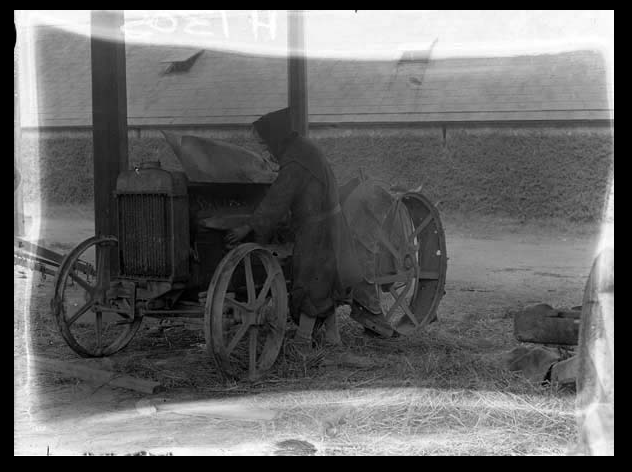
Even monks needed tools for tinkering. Check out this guy mending a tractor at St. Joseph’s Monastery, Roscrea, Co. Tipperary, 1930. (Flickr Commons)
While not necessarily considered as useful and productive as hobbies, board games also gained popularity as a way to pass the time, and Scrabble, Anagrams, and Sorry!, among others, were released or invented in the 1930s. While they didn’t necessarily teach overtly applicable job skills, some games did have an educational and economic component to them. I dug a little into the history Monopoly because it just seemed like it would be attached to some smarmy controversy, and boy, it delivered.
It turns out Monopoly was originally called “The Landlords Game,” and was created by Elizabeth Magie and patented in 1904 as a “practical demonstration of the present system of land-grabbing with all its usual outcomes and consequences.” Magie based the game on the economic principles of Georgism, a system proposed by Henry George based on the idea that people should own what they create, but that everything found in nature, most importantly the value of land, belongs equally to all humanity. Magie designed the game with the purpose of demonstrating how rents enrich property owners and impoverish tenants.

Gaming also was especially popular during the economic downturn, though some argued that it wasn’t as industrious. The Landlord’s Game, a game promoting social and economic justice that was ripped of by Parker Brothers in the 1930s and turned into a game of (fun) greedy land grabs. Monopoly has remained popular ever since.
The game board was incredibly popular in Ivy League schools in the 1920s and 30s and used as a learning tool. Students would create their own boards and name them according to their own cities. There was supposedly pride in the fact that the game was largely replicated in this homemade way as it did not promote the wealth of any big, bad company. Yes, you see where this is all going. It is unclear how Charles Darrow was able to obtain a patent for this game, as its history was easily traceable back to The Landlord’s Game, but nevertheless, he secured one in 1933, called it Monopoly, and effectively made Parker Brothers a major company from the profits. Things were a bit…altered, however. For example in the place of Monopoly’s “Go!” was original a box marked “Labor Upon Mother Earth Produces Wages.”

1930s Sears Roebuck ad for hobby equipment. Holy crap I want that microscope set.
The mid-1930s was also brimming with model building, especially model airplanes. Likely as an opportunity to actually have some positive stories to spin, media outlets were all over stories of model building due to the enthusiasm surrounding aviation at the time, and even started on-air model clubs, broadcasting to rural areas that didn’t have any groups nearby. A radio show called “The Jimmie Allen Club” featured actors like Mickey Rooney and Shirley Temple having aviation adventures. Municipalities and department stores offered classes in model building techniques as well.

Skelly Oil sponsored the Jimmie Allen Flying Club membership offer, circa 1933. Building models was huge during this period–tiny future airplane assemblers were being created everywhere!
Over the past decade, sites like Etsy.com have created a more concentrated marketplace for a growing number of hobbyists who want to make some cash on the side and for some, these hobbies turn into full time careers. The site does almost a billion dollars a year in annual transactions, and just the other day, WBEZ had a story about how Rockford, Illinois is trying to revive itself using an “Etsy economy.” Of course, a year previously there was controversy that Etsy was allowing sellers to outsource the work because they couldn’t keep up with the demand, which many argue changed the flavor of those homegrown greens (if you will). This blurring of the line between hobbies and work has recently been manifesting in a major way through craft brewing-gone-professional, and as self-taught woodworkers making furniture sell it at high prices in local retail stores. Lots of folks are quitting their day jobs, and I think it’s safe to say that with a few exceptions, most folks really want to leave their cubical to grow some vegetables or forge a knife, even if it’s just on the weekends, and even if they don’t get paid to do so. Maybe it’s just a matter of learning to trust in our creativity again as adults.

Amateur astronomer hobbyists made some unbelievably ambitious telescopes. This shows the construction of the Porter Turret telescope prior to the 1930 Stellafane convention, which attracted just under one hundred registered guests.
So, hobby on. You may just be able pay off those grad school loans and go to exotic places on a whim when your uniquely crafted Day of the Dead paper mache sculptures really take off. You know, for example. It’s gonna happen, damnit.

My friend Catherine riding her bike. January paper mache hobby experiment #3. Nailed it.
For more information on how folks stayed busy during the 1930s, check out “The Great Depression in America: A Cultural Encyclopedia, Volume 1,” by William H. Young and Nancy K. Young (you can find it on Google Books)
Some background on The Landlord’s Game:
http://lvtfan.typepad.com/lvtfans_blog/monopoly-and-the-landlords-game/
The WBEZ “The Etsy Economy” story:
http://storify.com/WBEZ/morning-shift-rockford-getting-a-boost-from-an-est
The plight of the farmer in the 1930s:
http://www.farmcollector.com/farm-life/u-s-farmers-during-great-depression.aspx
For more on the Amateur Astronomers’ Association of Pittsburgh, Pennsylvania and their journey to the 1930 Stellafane convention:
https://sites.tetratech.com/projects/103-RCPTResources/default.aspx
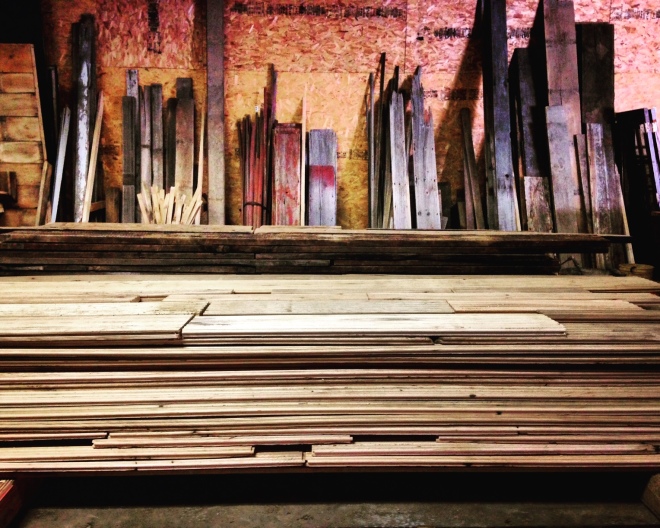


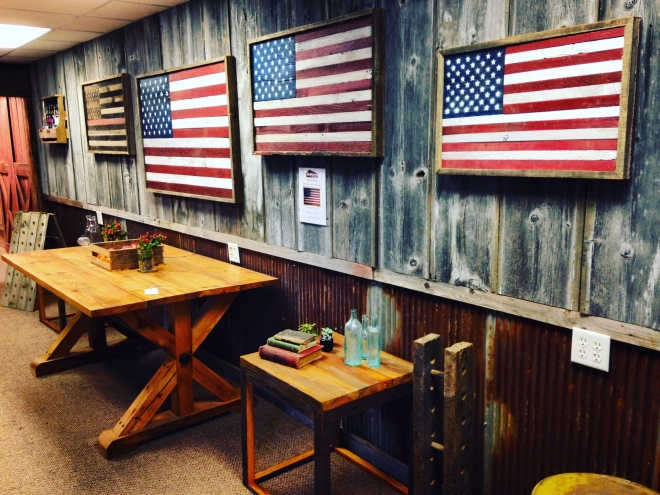

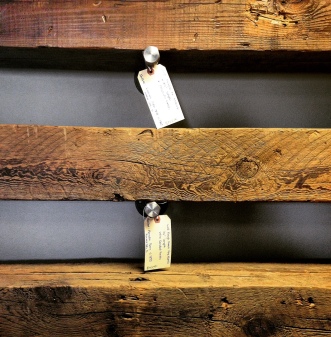



 *Note: Darren did such an amazing job summarizing the importance of these resources that many of the words in this post are his own. Thanks for making life so easy for both the people of Buffalo and also a gal in Chicago, Darren. All pics are of projects completed using the Tool Library’s resources.
*Note: Darren did such an amazing job summarizing the importance of these resources that many of the words in this post are his own. Thanks for making life so easy for both the people of Buffalo and also a gal in Chicago, Darren. All pics are of projects completed using the Tool Library’s resources.